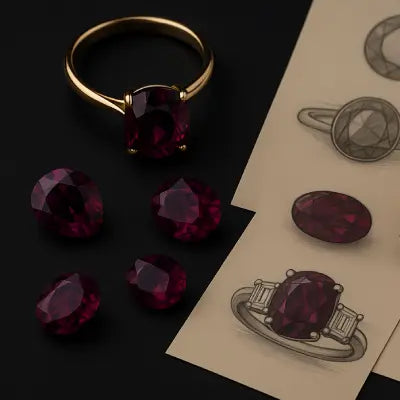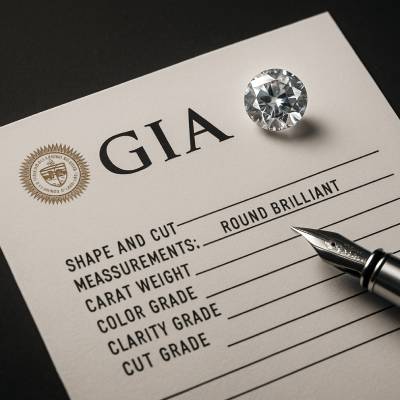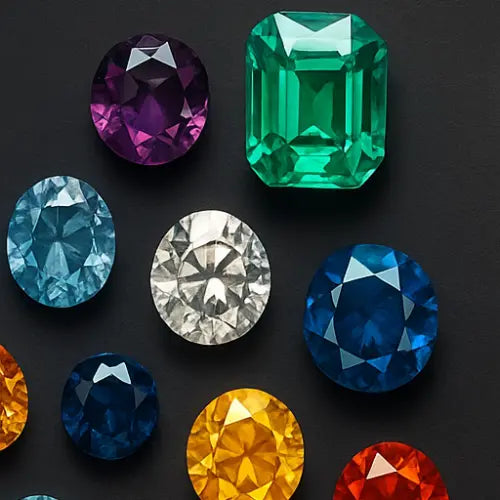In the current luxury market, precious metal selection is dictating both the aesthetic and the lifespan of high-value jewelry. Bay Area Handcrafted jewelry often reflects this balance, showcasing pieces that combine refined metals with artisanal techniques. Two materials dominate the conversation: gold and platinum. Ultralight newcomers such as titanium and aluminum are also widening design possibilities in jewelry design.
If you're browsing for something new, it's worth knowing what you're buying. Check out these real designs made with long-lasting metals and find the right fit for your style—and your budget.
Pure Gold and the Role of Alloys in Jewelry
Twenty-four karat gold represents the purest form of the metal, containing 100 percent gold with no additional elements. In its unmixed state, it exhibits a deep, rich yellow color and is exceptionally soft. These properties make 24k gold ideal for investment bars and bullion but unsuitable for most jewelry applications, where strength and wear resistance are essential.
To transform pure gold into a practical material for rings, bracelets, and other wearable pieces, metalworkers employ alloys—blends of gold with select metals. Alloys enhance hardness and scratch resistance while also producing a range of color options. By adjusting the type and proportion of alloying elements, manufacturers can achieve specific hues without compromising durability.
In the United States, gold purity is marked in karats. For example, an “18k” stamp means that 18 out of 24 parts are pure gold (75 percent purity), while “14k” means 14 parts gold (about 58.3 percent). In Europe, the same information appears as a three-digit number—known as millesimal fineness—where “750” indicates 75 percent gold (equivalent to 18k) and “585” indicates 58.5 percent gold (equivalent to 14k). Although the labels differ, they describe the same gold content, with 18k matching 750 and 14k matching 585.
Why 18k Remains the Professional Benchmark
Eighteen-karat gold—75 percent pure—occupies the industry’s “ideal zone.” It retains a saturated hue while remaining resilient enough for daily wear, a balance prized by leading designers, first of all, San Francisco-based artisan Robin Woolard. Fourteen-karat alloys do introduce marginal hardness, yet the paler tone and lower intrinsic value limit their appeal in the high-luxury segment.
Alloy Chemistry and Color Variety
To create wearable pieces, gold is mixed with harder metals, forming alloys that boost durability and introduce a spectrum of colors. By varying the type and proportion of these alloying elements, manufacturers can produce distinctive tones without sacrificing structural integrity.
- Yellow gold: copper + silver blend retains a warm, classic gold color; inherent stability means only routine polishing is required.
- Rose gold: higher copper content yields a pink-red tint; color runs through the metal, demanding no plating or special resurfacing.
- White gold: alloyed with nickel or palladium, then coated in rhodium for a bright white finish; rhodium plating wears off over 12–24 months and must be reapplied to maintain its appearance.
- Green gold: enriched silver content produces a subtle olive hue; integral color resists fading, with standard cleaning sufficing for upkeep.
- Black gold: achieved by adding ruthenium (Ru) or via laser/heat surface treatments; the dramatic finish requires occasional refinishing to preserve its depth.
Platinum: The Ultimate White Metal
Platinum occupies the top position in fine jewelry as a naturally white, noble metal whose appearance and performance require no surface treatments. Unlike white gold, which relies on a thin rhodium coating to achieve its bright finish, platinum is inherently silvery-white, and that color is built into its atomic structure. Over time, platinum does not flake or peel. Instead, it develops a soft, satiny patina that many collectors prize as a mark of authenticity and age.
In practical terms, most jewelry today uses alloys of 90 to 95 percent pure platinum. The remaining percentage typically consists of iridium, a fellow platinum-group metal that enhances hardness without compromising corrosion resistance. This blend delivers exceptional strength: platinum prongs and bezels hold gemstones more securely than any gold alloy, reducing the risk of stone loss over decades of daily wear.
Weight is another defining characteristic. Platinum’s density is roughly twice that of gold, giving each piece a reassuring heft that signals quality. This weight also contributes to comfort: a solid platinum ring settles snugly on the finger, and its mass dampens knocks and bumps rather than sharp impacts. However, the same attribute can make large platinum earrings or long, heavy necklaces feel cumbersome, so designers often reserve platinum for rings, bracelets, and shorter pendants.
In terms of hypoallergenic properties, platinum stands out as well. Its purity and inertness make it an excellent choice for sensitive skin, avoiding the irritations sometimes caused by nickel in other alloys. For these reasons: lasting whiteness, unmatched strength, and low maintenance, platinum remains the material of choice for flagship jewelry collections and the industry standard for setting the world’s finest diamonds.
Lightweight Contenders
Designers chasing a futuristic aesthetic increasingly specify titanium and aluminum, sometimes reinforced with carbon-fiber inlays. These metals offer extreme strength-to-weight ratios and hypoallergenic properties, though they lack the intrinsic value and heritage status of gold or platinum.
Shoppers seeking heirloom quality should lean toward 18k yellow or rose gold for color depth and manageable upkeep. Those prioritizing permanence and gemstone security will find platinum unrivaled. White-gold enthusiasts must budget for periodic rhodium recoating, while titanium and aluminum serve best in contemporary, everyday pieces where featherweight comfort outweighs tradition.






